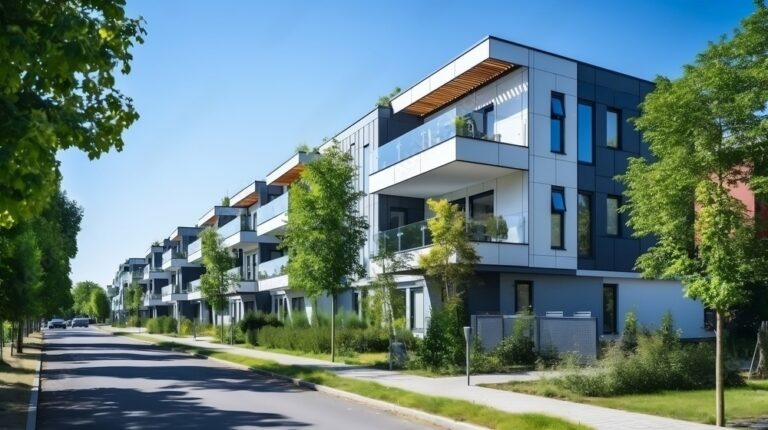Beyond Green: Exploring the Next Frontier of Sustainable Architecture

Let’s rewind the clock a bit and take a stroll down memory lane, shall we? Remember when being “green” just meant recycling your soda cans and using energy-efficient light bulbs? Ah, those were simpler times. But like a fine wine, sustainability has aged gracefully and evolved into something far more captivating.
In today’s world, architects aren’t just content with slapping a few solar panels on a roof and calling it a day. Oh no, they’re diving headfirst into a world of regenerative design, circular economy principles, and biomimicry. But what do all these fancy terms mean?
Regenerative Design: Nature’s Blueprint
Picture this: a building that not only sustains itself but actually gives back to the environment. Sounds like something out of a sci-fi novel, right? Well, welcome to the world of regenerative design! Inspired by the intricate workings of Mother Nature herself, regenerative design aims to create buildings that are not just less bad, but actively beneficial to the planet.
Take, for example, the Bullitt Center in Seattle, Washington. This marvel of sustainable architecture generates more energy than it consumes, thanks to features like solar panels, rainwater harvesting systems, and even composting toilets. It’s like the Energizer Bunny of buildings – it just keeps going and going and going!
Circular Economy: Waste Not, Want Not
Now, let’s talk trash – literally. In a world where landfills are overflowing and plastic islands are floating in our oceans, it’s high time we rethink our approach to waste. Enter the circular economy, a concept that’s all about closing the loop and keeping resources in circulation for as long as possible.
Imagine a building made entirely from recycled materials – old soda bottles, discarded newspapers, maybe even that hideous couch your aunt Mildred insisted you take off her hands. That’s the beauty of the circular economy – turning trash into treasure and giving it a second chance at life.
Biomimicry: Nature Knows Best
Biomimicry is the art of borrowing ideas from the natural world and applying them to human design – and let me tell you, nature’s got some pretty nifty tricks up her sleeve.
Take the Eastgate Centre in Harare, Zimbabwe, for instance. This groundbreaking building was inspired by the ingenuity of termite mounds, which maintain a constant temperature despite the scorching African sun. By mimicking the structure of termite mounds, the Eastgate Centre is able to stay cool without the need for air conditioning – talk about a win-win!
Challenges and Opportunities
Of course, no journey would be complete without a few bumps in the road. As we venture further into the realm of sustainable architecture, we’re bound to encounter challenges along the way. But fear not, brave adventurers, for with every challenge comes an opportunity to innovate, to adapt, and to overcome.
Whether it’s navigating the murky waters of government regulations or convincing skeptical clients of the benefits of green building practices, the path to sustainability is not always smooth sailing. But as the old saying goes, “where there’s a will, there’s a way” – and with a little creativity and a lot of determination, we can overcome any obstacle that stands in our way.
Conclusion: A Brave New World
As we bring our journey to a close, let us take a moment to reflect on the incredible possibilities that lie ahead. From regenerative design to circular economy principles to biomimicry, the next frontier of sustainable architecture is a vast and uncharted territory just waiting to be explored.
So let us cast off the shackles of conventional thinking, let us embrace the unknown, and let us dare to dream of a world where buildings not only coexist with nature but thrive in harmony with it. The future of architecture is bright, my friends – so let’s roll up our sleeves, put on our thinking caps, and build a better tomorrow, one green brick at a time.
And remember, as we embark on this grand adventure, let’s not forget to have a little fun along the way. After all, saving the planet doesn’t have to be a chore – it can be an exhilarating journey filled with wonder, discovery, and maybe even a few laughs along the way.
So here’s to the architects, the dreamers, and the visionaries who dare to imagine a world beyond green – a world where sustainability isn’t just a buzzword, but a way of life. Let’s make it happen, folks. The future is ours to build.
